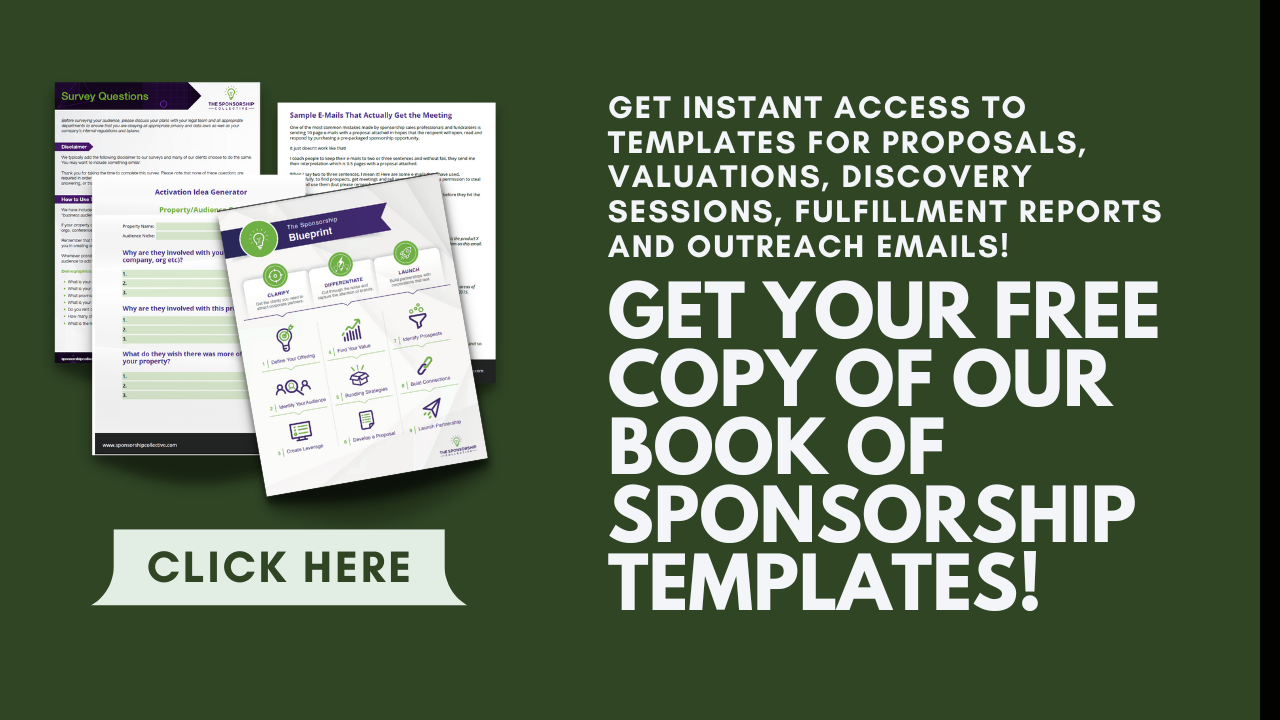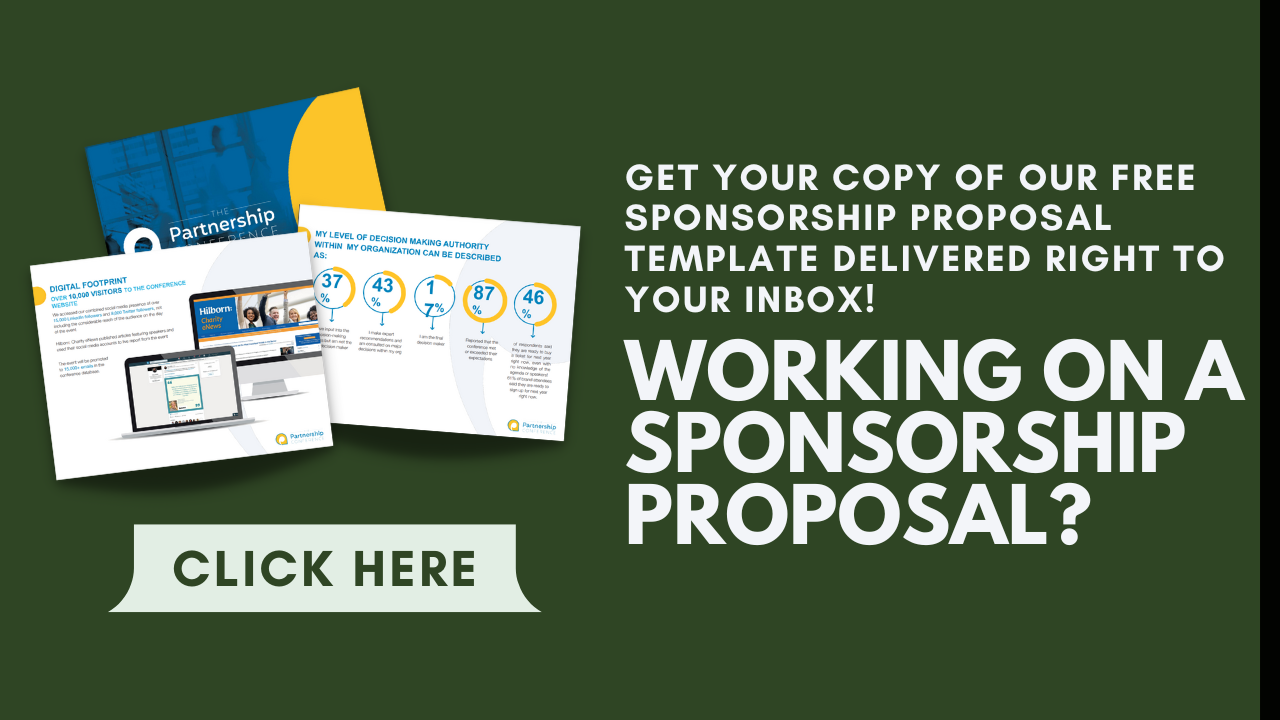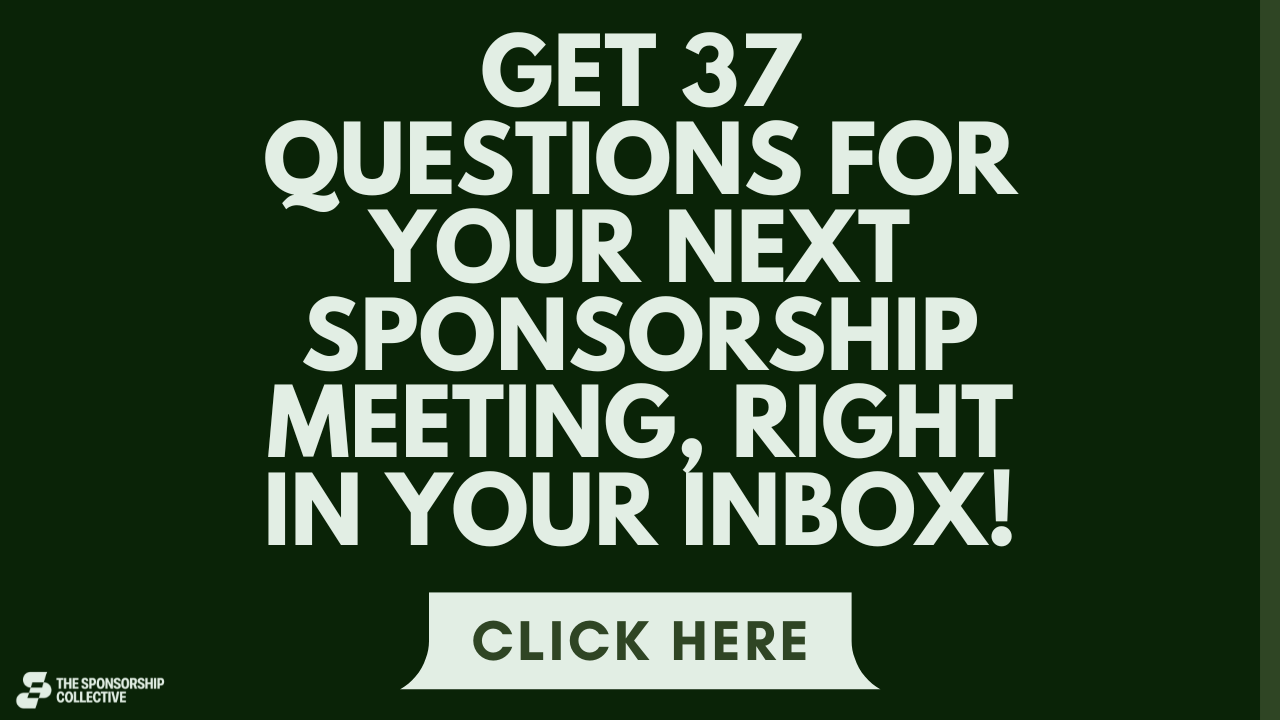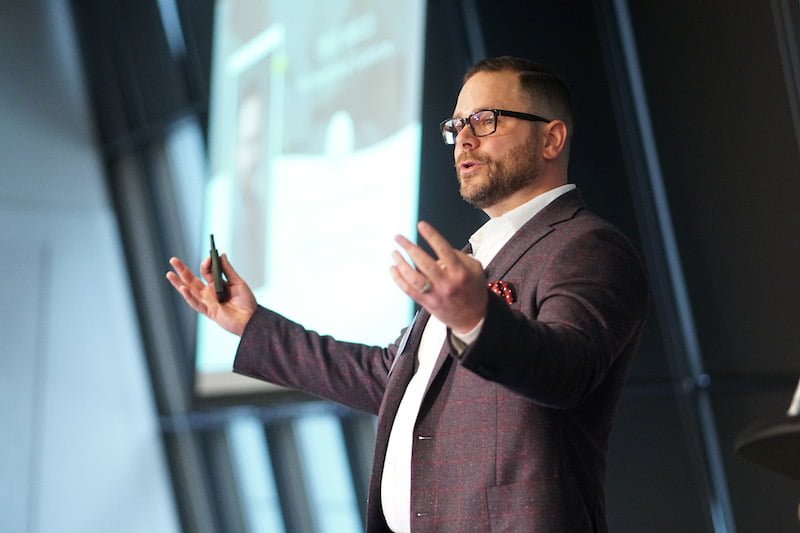Unfortunately, our prospects can suffer from the same misconceptions about sponsorship as everybody else. I want to share this case study with you to outline how important it is to educate our sponsors and to make sure we fully understand the needs of our sponsors before we close the deal.
Title Sponsorship and Sponsorship Levels
I met with a prospect on a sunny Tuesday morning with my usual approach, nothing in hand. I have memorized my five questions for every corporate sponsorship prospect and I came ready to dive deep into the marketing goals of my prospect. After some small talk, I asked my first question “Tell me about your marketing goals and what you want to achieve through sponsorship?”
Her answer threw me off, “I was just at a conference and their gold sponsor was listed everywhere! Banners, signs, logo placement…everywhere! I want to be the gold sponsor and I want you to list my company on everything!”
It happens very rarely that anyone requests an old fashioned “Gold, Silver, Bronze” sponsorship package and even more rare that a prospect doesn’t bite on my asking them for information about their goals. I probed deeper, “I see. It sounds like your goal is branding, that you want people to recognize your logo rather than take an action and engage your company. Am I on the right track?”
“Not at all” she said, “In fact, the only thing we want is for people to fill out an information request at conferences so that our sales staff can get in touch afterwards. But you should have seen the logo placement of this company at this conference! They were everywhere, and that’s what I want!”
Corporate Sponsorship is about Partnership and Consultative Sales
I dug a little deeper and tried a few more questions to get my prospect to see that we could accomplish her sales goals AND give her the logo placement she thought she needed..but to no avail.
I know I talk a lot about getting things right for our sponsors but fiscal reality takes over for me just as it does everyone else selling sponsorship! I’m not one to say no to a title sponsorship falling in my lap and my conscience was clear after trying hard to push back…so I sold the sponsorship! Or at least I thought I did.
Before I left the office I turned to my host and said “Hey, by the way. What was the name of that sponsor who was tattooed all over the conference last week?
Her answer? “I can’t remember.”
Event Sponsorship Levels and Asset Valuation
In order to get the total value of the sponsorship package to that of title sponsorship I had to add an awful lot of logo placement. Logos on signs and banners is some of the cheapest stuff that you can sell and so it made it a real challenge to get the value of this package into the mid five figures. I submitted my proposal and heard the words you never want to hear as a sponsorship sales person “Let me share this internally and get back to you.”
Why is this the kiss of death when selling sponsorship? Because it means the person I was talking to isn’t the decision maker. It also means that she is my internal champion for a sponsorship package that I know doesn’t make sense for their brand.
How to Get Sponsors Back Once They Say No
A week later I got the classic template e-mail telling me that they went another way. After convincing my prospect to give me another chance, I asked her to bring the decision maker to the meeting. In that meeting I went back to my sponsorship prospecting questions and then asked if I could put together a draft sponsorship proposal for their feedback. This time I focused on getting their sales staff in front of their key audience and collecting ballots.
The result? I had myself a title sponsor…and we didn’t call them “Gold, Silver or Bronze”! In fact, we barely put their logo on anything because their goals weren’t related to brand awareness!
Corporate Sponsorship Case Study: Lessons Learned
Lessons learned from this case study:
- Recognize when you aren’t talking to a decision maker
- Don’t focus on making the sale in the first meeting, or even the second
- Educate your sponsors and make sure you understand their marketing goals
- Rushing to the sale with a sponsorship package that isn’t a fit means you miss the sale or, at the very least, it makes your activation and fulfillment really tough to do
Recognize When You Aren’t Talking to a Decision-Maker
I always tell my clients to envision the people at a company on a totem pole. You have a sponsorship division within the sponsor company, which may include one or two, maybe five to 10 people if you’re lucky.
However, these are only the ones manning the company’s sponsorship division. They themselves don’t have decision-making power, at least not always. They have someone over their head, and even that person has someone over their head.
Getting right to the decision-maker is ideal, as this can expedite the process and reduce the amount of red tape you need to cut through, so to speak. However, if you know that your contact at the company can get in quick touch with the decision-maker, that’s almost as good.
The problem is when you talk to someone low on the totem pole. Then your sponsorship request becomes like a game of telephone, where it’s passed on to someone, then someone else, and then someone else before finally reaching the decision-maker.
It takes that much longer just for your sponsorship request to get cleared, let alone any talks of dollars and cents.
Most sponsorships are time-sensitive events, so you probably don’t have months or longer to wait to hear back from the person at the top.
As often as you can, get as close to the decision-maker as possible.
Don’t Focus on Making the Sale in the First Meeting, or Even the Second
I hope my case study helped you realize that the point of the first sponsorship meeting isn’t to achieve a sale.
I can understand the frantic position you’re in. You have a deadline approaching for your event or opportunity, and you need sponsorship like yesterday. Even if you don’t have a looming deadline, you’re still working toward an event several months from now, so you’d like the guarantee that you’ll get funding or promotions from this sponsor.
And this is where most sponsorship seekers shoot themselves in the foot. You see, by pushing your sales mentality so hard, you ensure that a.) you not only fail to close the deal during the meeting but b.) you alienate the prospect and likely kill the deal.
The first meeting is for discovery. In other words, this is your golden opportunity to ask the sponsor questions you can’t find when researching on Google. For example, you can ask about their target market, their latest campaigns, their financial shortcomings, and their future plans.
I say this is a golden opportunity because rarely do you get to learn so much about a sponsor as you do during this meeting. Squandering it on trying to make a premature sale won’t end well and simply isn’t worth it.
I promise, if you learn about the sponsor, get to know their pain points, then tailor a solution to solve those pain points, you will have an opportunity to make a sale because the sponsor will be interested in working together.
Educate Your Sponsors and Make Sure You Understand Their Marketing Goals
You’ve been running your event, program, or opportunity for as long as you can remember now. However, you have to consider that the sponsor may be new to your industry, so it helps to educate them on what you do and why it matters.
Once you’ve got that out of the way, take the time to ensure you understand what the sponsor is trying to achieve 100 percent. If something didn’t come across clearly enough to you during the discovery session, that’s okay! Just ask!
Sponsors are usually more than happy to clarify any point you’re confused about, but you have to be willing to bring it up.
The worst thing you can do is willfully push on, hoping you achieve the sponsor’s objectives without being entirely certain of what those objectives are.
Don’t Rush the Sale
This is arguably the biggest key takeaway from this entire case study. I’ll broaden it even further and explain that the sponsorship process can’t be rushed.
If you have an event coming up and you need sponsorship ASAP, you need to better manage your time and goals next time. You should ideally begin seeking a sponsor immediately after your event or opportunity ends so you can plan adequately for the next one.
I often have sponsorship seekers tell me that’s way too early, but time flies, and before you know it, it will be several months to your event. You need sponsors secured way before that.
Plan early, take your time, and let the process play out organically.
FAQs
Why Are Gold, Silver, and Bronze Sponsorship Tiers So Frowned Upon?
These tiers are an outdated way of doing sponsorship, for starters. Using them holds good assets and activations hostage, forcing the sponsor to pay more. They also usually end up with assets and services they don’t want because they’re part of a package deal.
Further, gold, silver, and bronze tiers leave no room for customization, which sponsors need if you hope to solve their marketing challenges.
What Else Can a Sponsor Say That Indicates They’re Not Interested?
Besides “we’ll look at this internally,” if you hear a sponsor say the following, it’s bad news:
- “Just send me the proposal!” This is usually just a platitude, and they don’t mean it.
- “We’ll get back to you.” And then they typically never do.
- “We’ll call you!” And again, they don’t mean it.
Sponsors want to avoid conflict, so they’ll use these lines and then disappear. I call it having happy ears. Learn to take what a sponsor says at face value.
Wrapping Up
Once upon a time, I was a green sponsorship seeker just like you, and I made every mistake in the book. I learned what I was doing while I was doing it, improving along the way. That’s what I hope this case study illustrates to you, so you don’t have to make the same mistakes I did.
Also, know that the old, antiquated ways of doing sponsorship don’t work. You must customize everything, hold a discovery session to understand your sponsor’s needs, and cool your jets on pushing the sale.
It will pay off!
- About the Author
- Latest Posts
Chris Baylis is the Founder and Editor-in-Chief of The Sponsorship Collective.
After spending several years in the field as a sponsorship professional and consultant, Chris now spends his time working with clients to help them understand their audiences, build activations that sponsors want, apply market values to their assets and build strategies that drive sales.
Read More about Chris Baylis




